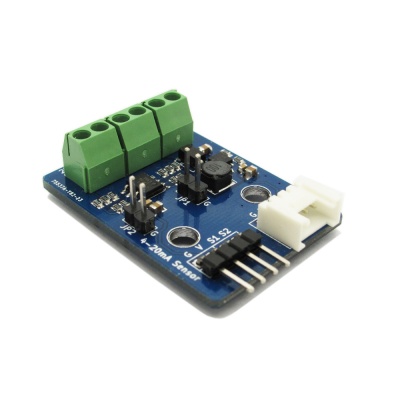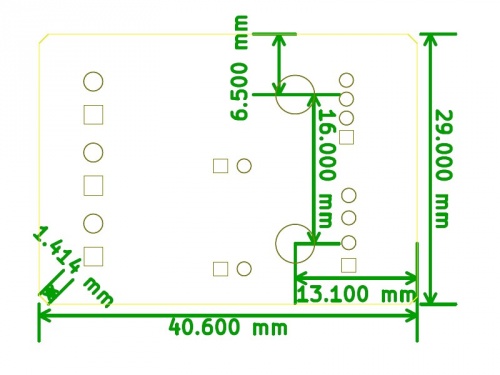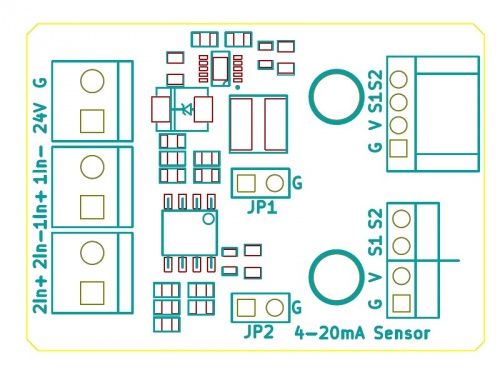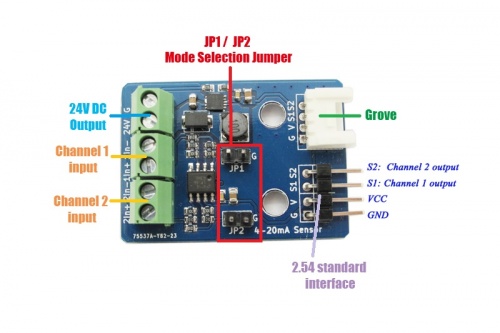Difference between revisions of "4-20mA Sensor Brick"
From ITEAD Wiki
m |
m (→The relationship between output voltage and input current in channel 1,2) |
||
| Line 55: | Line 55: | ||
==The relationship between output voltage and input current in channel 1,2== | ==The relationship between output voltage and input current in channel 1,2== | ||
| − | *In theory, their relationship can be | + | *In theory, their relationship can be described into this formula: U= 100×I×2 |
*Note: error ±2% in practical test. | *Note: error ±2% in practical test. | ||
Revision as of 02:06, 1 September 2014
Contents
Overview
4~20mA Sensor Brick is an electronic brick module that can be used to test electronic current loop from 4mA to 20mA and support type2,3,4 current output. With a 5V to 24V DC-DC power boost convertor, its max current output can be 150mA, which can be for equipment use.
Features
- Compatible with the mainstream 2.54 and 4-pin Grove interface in market
- Compatible with type2,3,4 electronic current loop
- With use of M4 standard fixed holes, compatible with M4-standard kits such as Lego and Makeblock.
Specification
| PCB size | 40.6mm X 29mm X 1.6mm |
| Power supply | 5V DC |
| Compatible interfaces | 2.54 4-pin interface and 4-pin Grove interface(1) |
Electronic Characteristics
| Parameter | Min. | Typical | Max. | Unit |
| Power supply | 4.5 | 5 | 5.5 | VDC |
| Input measurement current | 4 | - | 20 | mA |
| Output Current(DCDC) | - | - | 150 | mA |
Hardware
| JP1 | JP2 | |
| Connected | CH1 Type 2/3 | CH2 Type 2/3 |
| Disconnected | CH1 Type4 | CH2 Type4 |
- 1.When access in type2,3 electronic current loop, please connect JP1 or JP2, both 1In- and 2In- is equal to connecting ground, 1In+ and 2In+ are connected with the current pins to be measured.
- 2.When access in type4 current loop, connect the input end to 1In+ or 2In+, the output end to 1In- or 2In-, and unplug JP1 or JP2 simultaneously.
The relationship between output voltage and input current in channel 1,2
- In theory, their relationship can be described into this formula: U= 100×I×2
- Note: error ±2% in practical test.
 Notice
Notice


